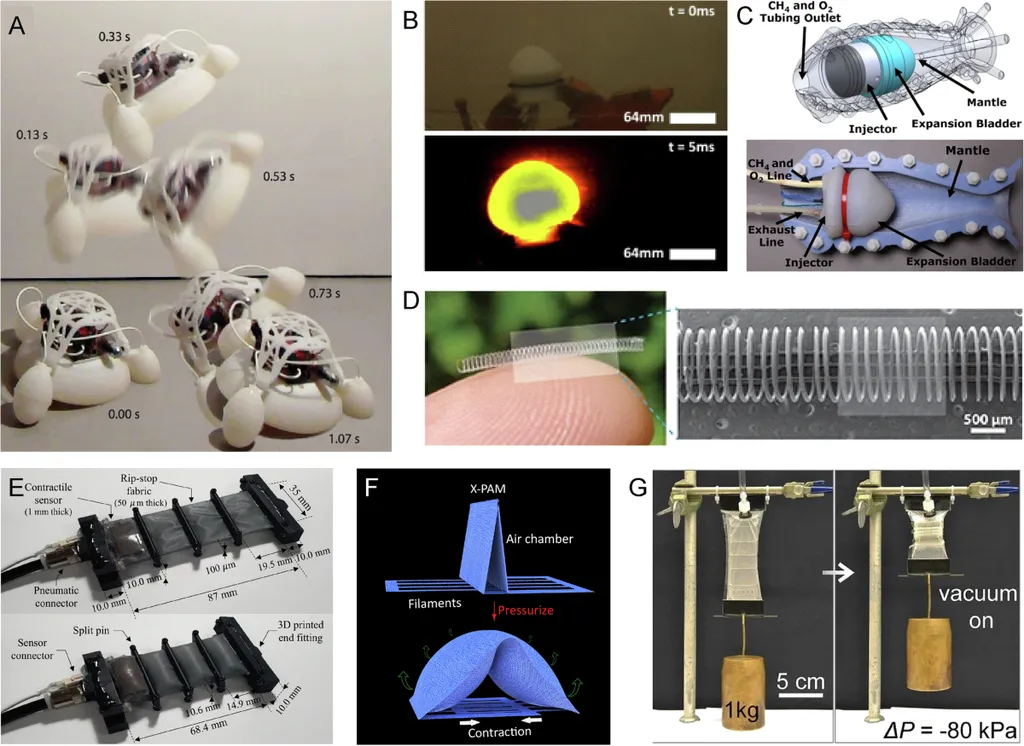In the realm of advanced materials and robotics, a groundbreaking development has emerged from the labs of Tsinghua University, promising to revolutionize the capabilities of soft actuators. These versatile devices, crucial for wearable technologies and soft robotics, have long faced a critical limitation: the challenge of achieving both substantial reversible deformation and high output force simultaneously. Enter Jincong Chen, a researcher from the Department of Mechanical Engineering at Tsinghua University, who, along with his team, has developed a novel solution that could reshape the landscape of soft actuator technology.
The team’s innovation lies in the creation of graphene/polydimethylsiloxane (PDMS) composite materials, which boast high photothermal conversion efficiency and rapid photo-responsiveness. But what truly sets their work apart is the inspiration they drew from biological structures. “We looked to nature’s design, specifically the interplay between muscles and skeletons, to enhance our actuator’s performance,” Chen explains. By integrating carbon fiber bundles as reinforcement skeletons, they fabricated a composite material/carbon fiber skeleton/PDMS actuator that showcases remarkable capabilities.
Under infrared laser irradiation at 4.15 W/cm², the actuator demonstrated a bending angle of 90°—a staggering 3.5 times greater than actuators without the carbon fiber skeleton—and an output force of 0.89 mN, which is 1.34 times higher than its counterparts. These advancements open up new possibilities for applications requiring high load-bearing capacity, such as soft robotic grippers and artificial muscles.
The implications of this research extend far beyond the lab. In the energy sector, for instance, soft actuators with enhanced load-bearing capabilities could lead to more efficient and versatile robotic systems for maintenance and inspection tasks in challenging environments. Imagine robotic grippers that can handle delicate components with precision or artificial muscles that power adaptive systems in renewable energy technologies. The potential is vast and exciting.
Chen’s work, published in the journal ‘AIMS Materials Science’ (which translates to ‘Materials Science’ in English), represents a significant step forward in the field. As the research community continues to explore and build upon these findings, the future of soft robotics and wearable technologies looks brighter than ever. The journey from lab to commercial application is often long and complex, but with innovations like these, the path forward is illuminated with promise.

